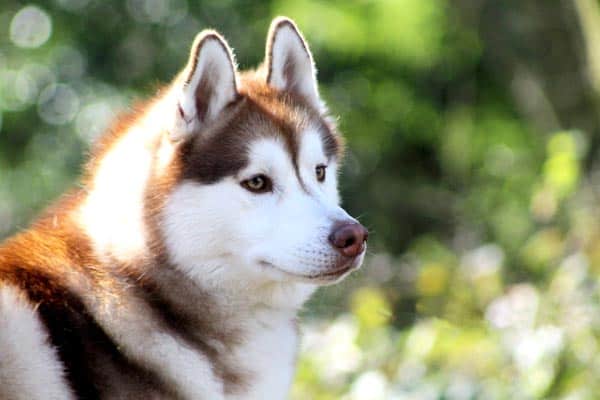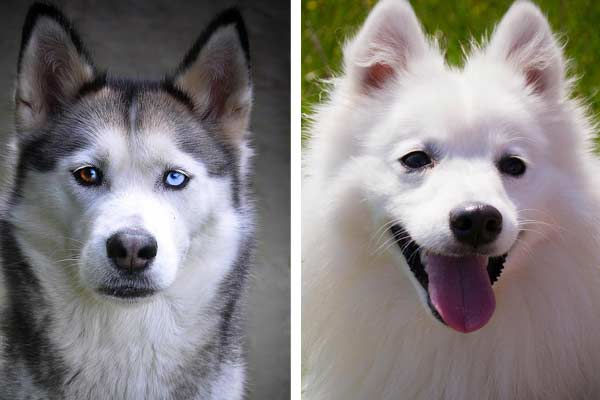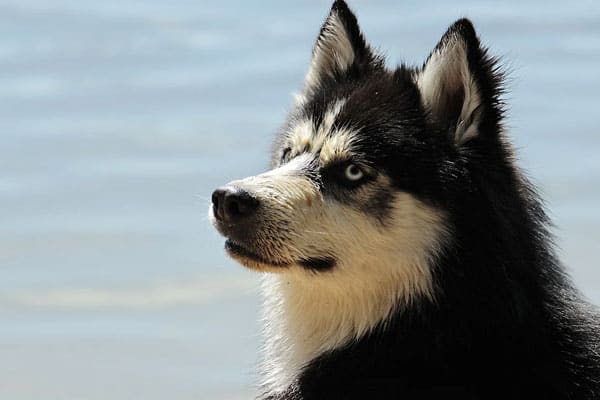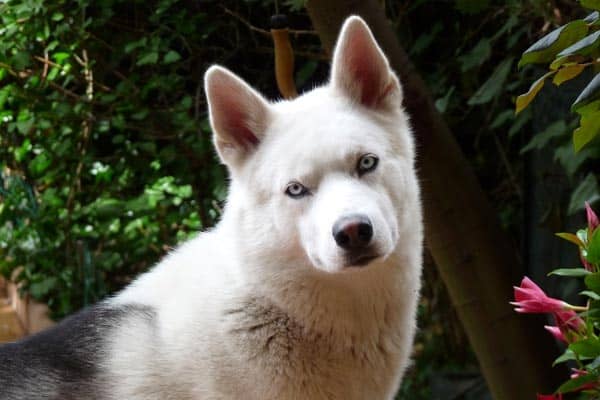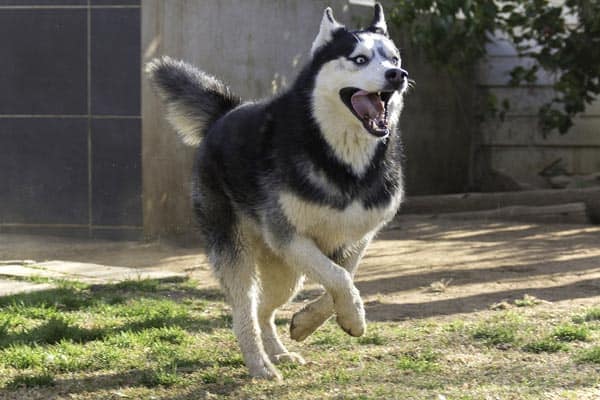How Often Do You Bathe a Siberian Husky: Learn About the Unique Bathing Needs of This Working Dog Breed
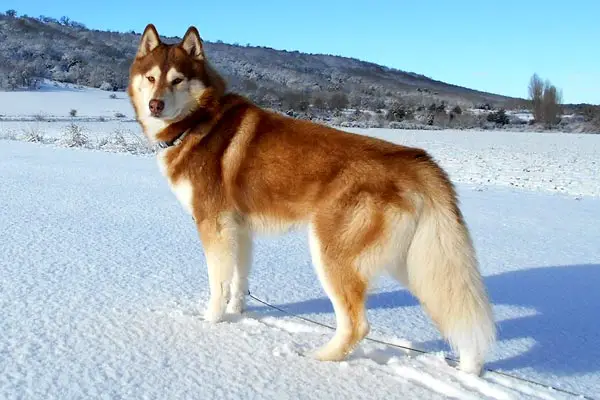
The Siberian Husky has many unique traits in Canis lupus familiaris, the domestic dog.
These dogs can even seem “un-dog-like” compared to traditional dog breeds like retrievers or hounds.
Siberian Huskies typically do not have any doggie odor. They can work long hours daily and keep their white coats sparkling. Huskies also take an active role in their grooming.
All of this makes it a natural question to ask: how often do you bathe a Siberian Husky? Find out all the information you need about Siberian Huskies and bathing in this article.
How Often Do You Bathe a Siberian Husky?
Siberian Huskies are very energetic and active dog breeds. But they typically stay very clean no matter how much running, playing, and work they do.
Siberian Huskies are much more like cats than most dog breeds in that they self-groom a great deal by licking and distributing natural coat oils to keep the coat clean. For this reason, you shouldn’t need to bathe your Siberian Husky more than a handful of times each year. Many Husky owners will offer a bath once per quarter or even semi-annually.
See a Trio of Siberian Huskies Getting a Bath
This great owner-made video showcases how to prepare to bathe one, two, or (in this case) three Huskies.
The video gives you lots of great tips at each stage of the process, from how to prepare your Siberian Husky to have a good experience of being bathed to what to do first and next and what supplies and materials to have on hand for bath time.
Understanding the Unique Properties of the Siberian Husky Coat
As the Tails of the Tundra Siberian Husky Rescue charity highlights, the Siberian Husky has a unique coat type that has evolved to protect the dog in specific ways.
Like domestic pet cats, Siberian Huskies can often be observed licking and grooming themselves fastidiously. Perhaps, for this reason, the Siberian Husky usually has a very feline-like habit of self-grooming. Why do they do this?
Like many working dog breeds, Siberian Huskies have unique double-layer coats. The coat’s outer layer is a coarser, longer layer with water-repellent properties.
This layer helps protect the dog from wet and cold weather and guards against sunburn.
The underlayer of the coat is much softer, finer, and thicker – like downy insulation. The purpose is to keep the dog warm and dry.
To keep the two layers of the coat functioning correctly, the Siberian Husky needs to ensure each hair is coated with natural skin oils.
This is especially true of the outer water-repellant coat layer. The skin oils help keep moisture away from the dog’s skin.
So the Siberian Husky ensures those natural oils are well-distributed throughout the coat.
A fully functional, protective, and insulating coat can make the difference between health and illness and even life and death for a working Siberian Husky in the cold, wet, snowy climates that sled dog teams typically work in.
Why Siberian Husky Dogs Do Not Need Frequent Baths
Many dog breeds become stinky very quickly, and you need to bathe them regularly – sometimes as often as every few weeks.
But Siberian Husky dogs are not like this at all.
The Siberian Husky is often considered a somewhat “self-cleaning” dog breed. This means that this dog takes charge of its coat care and maintenance.
Typically, you will have very little to do in managing doggie odor or built-up dirt, leaves, sticks, or other detritus.
As Husky House K9 Rescue charity explains, Siberian Huskies also shed constantly.
The constant shedding means the coat is constantly renewing and replenishing itself day in and day out. Once or twice per year, your dog will also go through an event called a “coat blow,” where the undercoat falls out and grows back in.
This is a seasonal shed designed to keep your dog cool in summer and warm in winter.
So if there is any trapped dirt or debris on the hair, it will be shed routinely, usually before you have to bathe your dog.
When you combine the Siberian Husky’s constant self-care and self-grooming and the constant year-round shedding, it becomes easier to see why these dogs don’t need bathing nearly as frequently as most companion canines.
As the American Kennel Club (AKC) points out, too-frequent baths will strip out those essential natural skin oils your dog worked so hard to distribute through the coat.
You don’t want to strip out the natural oils because this can potentially cause problems in the natural balance of the coat’s protective properties and cause more work for your dog.
Is It Okay to Shave or Clip a Siberian Husky’s Coat?
Many first-time Siberian Husky owners are not fully ready to experience the enormity of the “coat blow” that these dogs go through once or twice each year.
They may even be unprepared for the volume of ongoing shedding their dog does and the amount of shed, dead hair they constantly have to sweep up and dispose of.
Experienced Siberian Husky owners will quickly explain that the shedding is constant and it is essential to learn to live with the hair everywhere. But new Siberian Husky owners may think they have the perfect solution by shaving their dog.
You never want to shave or clip your Siberian Husky’s coat to control shedding or to avoid having to give your dog baths.
This is because of the unique nature of these dogs’ double-layer working-dog coats.
When you shave, cut or clip a Siberian Husky’s coat, it will cause a lifelong problem you won’t be able to solve. The problem is that the coat will not grow back the same way again.
The standard way that the Siberian Husky’s adult coat grows is in two layers. As you learned here earlier, the two layers are quite different. They need to be different to do their jobs properly – and they also need to stay separate for the same reason.
But after a Siberian Husky gets a haircut or a shave, the two layers will start to grow back together. The hairs will mix and mingle. The undercoat will no longer be an undercoat, and the outer coat will no longer be an outer coat.
So your dog won’t have either the complete water-resistant properties of the outer coat or the total insulating properties of the inner coat available anymore.
Shaving or cutting your Siberian Husky’s coat will also destroy the timing of the ongoing and seasonal sheds designed to replenish and strengthen the coat protection routinely.
If you are tempted to shave or cut your Siberian Husky’s coat to control shedding or cut down on brushing and coat maintenance, it is essential to understand you may create more severe problems (and more severe ones) than those you think you are solving.
Why Do You Need to Bathe Your Siberian Husky At All?
As Preventative Vet points out, since the Siberian Husky’s unique coat has natural cleaning properties, they don’t need to be bathed frequently.
But they do need to be bathed occasionally. There are two critical reasons for this.
Some of the furs will get trapped in the coat.
The first important reason you need to bathe your Siberian Husky occasionally is that your dog sheds so much that not all the dead, shed hair falls out of the coat.
This hair will build up over time. Some of it gets caught in the surrounding coat. It can block airflow from circulating in the coat and lead to trapped toxins such as bacteria or fungi.
Sometimes these trapped hairs and the toxins they harbor will start to cause doggie odor. Other times they will lead to abrasion of the skin or even infection.
Getting that shed, dead hair out of the coat is essential for two reasons: it will reduce the amount of sweeping you need and make your dog’s job of maintaining their coat just that much easier.
Bathing gives you a chance to examine your dog thoroughly
Because Siberian Huskies often seem to hate baths and don’t always love being brushed, giving your dog the kind of head-to-toe examination that helps you catch health issues early can be challenging.
Usually, you can train a new Siberian Husky puppy to accept brushing and baths right from the start. But if you are rescuing an adult Siberian Husky, this isn’t always so easy to accomplish.
The good news is that you don’t have to bathe your Siberian Husky very often. But you can’t avoid it altogether because you sometimes must examine your dog.
You want to be able to check the whole package’s paws, ears, tail, belly, skin, eyes, and nose. You must ensure your dog is healthy and that no infection or abrasion could cause problems.
Bathing gives you the perfect opportunity to do this.
Why Don’t Siberian Husky Dogs Like Baths?
Now you have a better understanding of why Siberian Huskies do need to be bathed.
But you also know they don’t need baths that frequently.
All of this means you may be perceiving the problem Siberian Husky owners often have at bath time: Siberian Huskies typically don’t get bathed often enough to get used to it!
In other words, as this Husky owner forum highlights, most owners report that their Huskies hate getting bathed.
This holds even for Siberian Huskies who love to swim and like the water. Many times, Siberians don’t perceive bath time as water time. So they love to swim but hate to be bathed.
There can be various reasons for this, although the number one reason is usually that these dogs are not bathed frequently, and thus they never get used to it.
If you are rescuing an adult Siberian Husky who hates being bathed, it might be that the dog has never been bathed before and is afraid of it. Another common reason is that the dog has had a bad experience being bathed and is worried.
Sometimes the reason is that the process is uncomfortable. The water may be too warm or cold, or skin sensitivity may be due to abrasion, infection, or the shampoo and products used.
Luckily, these are things you can work with. You can adjust the process to help your Siberian Husky learn to tolerate bath time and maybe even grow to like it.
How to Bathe a Siberian Husky Dog
Whether your Siberian Husky dog is about to have its very first bath or you are bathing a dog that doesn’t like having baths, you will want to set everything up ahead of time to give your pup the best possible experience.
First, give the coat a good brushing.
You can count on dislodging quite a lot of dead, shed dog hair while bathing your Siberian Husky.
So it can be helpful to try to remove some of that dead hair before you have a sopping wet dog on your hands!
It is much easier to work out any tangles or mats in the coat and deal with areas that seem abraded, irritated, or infected when your dog is still dry.
If your dog’s coat has a lot of tangles or mats that might cause your pup pain as you work them out, spritz on some canine detangler product or conditioner first. This will make it much easier to brush through the coat until it is smooth.
Use only shampoo and coat products formulated for canine skin pH
Canine skin pH is different than human skin pH. For this reason, even using so-called “baby shampoo” or “sensitive skin shampoo” made for humans is not a good idea.
Many dogs have allergic reactions to shampoo and coat care products that are too harsh or concentrated or don’t have the proper pH balance.
Choose your products carefully. If possible, do a little skin patch test on your dog before bath day to ensure the product doesn’t irritate the skin.
Make sure you have a proper bath or shower at home
You might consider using a self-wash for dogs if you don’t have a traditional bathtub or a more oversized walk-in shower at home.
Many cities now have these facilities where you can take your dog and pay a small fee to use their roomy canine tubs and canine-friendly showering nozzles.
Get the water temperature just right.
You don’t have a second chance to make an excellent first impression on bath day. So one thing you want to do is make sure the water temperature is comfortable.
Room-temperature water is the best choice. Your Husky may not be used to warm or cold water, and the sensation may not feel comfortable.
Always test the water temperature on the inside of your wrist first. This will give you the most accurate gauge of how it will feel to your dog.
Talk to your dog and have plenty of treats on hand
Your Siberian Husky may not love baths, but they love you and will look to you for reassurance, encouragement, praise, and positive rewards.
Filling bath time with pats, treats, praise, and togetherness is an excellent way to ease anxiety about the unfamiliar routine.
Double or triple-rinse your Husky
If any of the shampoo or soap you use gets left in the coat, it will cause irritation or itchiness later.
Rinse your dog until you can’t see any further suds or soap. Then do another thorough rinse to be sure.
Dry and brush your dog again.
The Husky coat can be slowly dry because it is so thick. To avoid having a wet and uncomfortable dog, you can use a blow dryer on the cool or warm (never hot) setting to speed up the process.
Then give your dog a final brushing to remove any remaining dead or shed hair, and enhance the circulation in the skin.
Finish it with another round of praise, pats, and treats to reward your Siberian Husky for being so brave and good.
